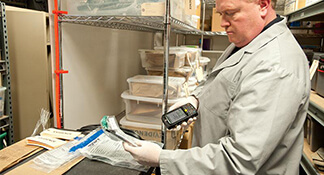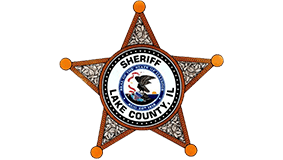For most companies, inventory-tracking errors are important, but rarely life-or-death situations. For the Lake County (Ill.) Sheriff’s Department however, “life-or-death” takes on new meaning. To manage all its criminal evidence, victims’ personal effects and lost items, this Sheriff’s Department turned to barcoding to ensure that nothing is misplaced or mislabeled.
Challenge
Once evidence is received at the Lake County Sheriff’s Department’s evidence facility, it must be entered into the system to identify what is in inventory and how it got there. Traditionally, after sealing an item in an evidence bag, the officer would fill out a handwritten form to request that the items be submitted into property control. The property control form included all vital information about the item: the case number, the nature of the incident, the time and date that the item was collected, the location of the offense, the location at which the item was collected (if different), the name of the victim or suspect, the property owner’s information (in the case of stolen property) and an identifying number provided by the officer to sequentially record the many individual items recovered at each scene. Finally, the officer would include a brief description of the evidence itself. Besides being a time-consuming task—a new form had to be completed for each item—the information on this form was only as valid as the legibility of the officer’s handwriting. After submitting the form, the information would then be manually entered into the system, diminishing the likelihood for complete validity even further.
Additionally, every time the item moved—either in and out of the department or between officers—the action would have to be entered into a ledger book. The information in the ledger was periodically entered into the system. Individuals looking to retrace the steps of an item had to browse through the computer terminal and physically search the ledger, hoping that all movements had been recorded accurately, completely, and in a timely manner.
The Lake County Sheriff’s Department recognized it needed a new inventory management system that could track evidence at every step—sometimes right from the scene of the crime.
Solution
Fortunately for the Sheriff’s Department, there is Zebra Technologies.
Applications—Evidence Facility Tracking
Instead of handwriting all of the vital information on the form, the officer keys the same data into a dedicated terminal by completing the fields on the screen. Once completed, the system automatically prints a barcode label from one of four Zebra® desktop label printers. This label is placed on the evidence container, then scanned with a handheld scanner. The officer chooses a secure evidence locker for temporary placement prior to filing, then scans a barcoded tag on the locker to alert the system of the object’s location.
When the item leaves the locker for a more permanent location, the property manager prints another, smaller barcode label that identifies the precise location where the object will be stored in the warehouse. This label, the larger label and the secure locker tag are all scanned to initiate the object’s movement within the system. Once the item arrives at the appropriate shelf, the two labels are scanned to alert the system that the item has arrived at its final destination.
On-Scene Evidence Tracking:
Lake Country Sheriff’s Department officers can now prevent evidence contamination at the crime scene as well. Detectives can now work at the scene with a battery-powered laptop computer and a Zebra battery-powered mobile label printer to ensure that evidence is tagged and secured immediately. Upon returning to the station, the laptop’s data is uploaded into the system and the evidence is entered into property control.
“With barcoding, managing the flow of evidence and other property at the station is simply automatic. The printer and the field evidence tracking system are lifesavers,” said Lake County Sheriff Department Sergeant Scott Robin. “When we go out to a major crime scene, we sometimes have to track 200 items or more without a power outlet or even a car nearby to use as a power source. Out in the field, we deal with every kind of climate—including rain, snow and freezing temperatures. We need something extremely durable and suitable for rugged conditions, and the Zebra portable printer is definitely meeting our needs.”
Results
The combination of desktop and portable mobile printers has enabled the Lake County Sheriff’s Department to successfully monitor the movement of every piece of evidence without the cumbersome nature of ledger books, the de facto standard of the crime-fighting community to date.
Most mobile printers are direct thermal models, which means the label or receipt output is designed to last a month or two. Zebra also manufactures a thermal transfer mobile printer, which produces archival quality labels that can sit in evidence waiting years for a trial, if necessary. To ensure label durability in both the desktop and mobile printer applications, they specified Zebra’s Trans Matte 3000 label stock—a smooth coated paper label with an all-temperature adhesive, valuable for outdoor conditions.
Process improvement, tracking accuracy, time savings and increased security are the goals and results of these systems. With barcoding, managing the flow of evidence at the station is simply automatic.
The package has been so successful, similar solutions are popping up in police and sheriff departments nationwide including Battle Creek, Michigan, Anne Arundel County, Maryland, and Rochester County, New York. Recently, handheld Palm® OS devices from Symbol Technologies have been used as a more compact alternative to the field laptops.


